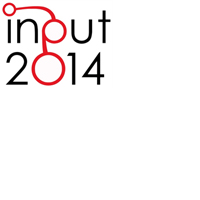Visualisation as a Model. Overview on Communication Techniques in Transport and Urban Planning
Abstract
Information and Communication Technologies (ICT) changed the way planners present and operate with their projects. New visualisation tools have changed the ways projects and plans are presented and disseminated. However, the opportunities given by visualisation are not completely exploited in the professional practice. This is due to several bottlenecks which occur in the daily carrying out of activities. The paper is organised in three sections. The first one explains how visualisation can be an added value to the planning practice if it is organised and designed as a framework of information; conceiving the visualisation as a model, data can be managed and represented in order to provide information at different levels of expertise, allowing city plans to be analysed and understood before their realisation. The second section resumes the changes caused by the introduction of ICT within the daily practice; a comparison between pre-digital and digital approaches highlights current opportunities for implementing the communication values of plans and projects. The third part illustrates some examples of innovative visualisations in the urban and transport planning practice, showing a number of uses of visualisation to fit different purposes. The paper concludes this insight formulating the necessity for integrating the studies on visualisation coming from different disciplines into a scientific method that can be proposed as a guideline in building the images of urban and transport plans. This would be particularly useful for obtaining a more scientific approach in the choices of representation and visualisation of urban aspects.Downloads
References
Batty, M. (1976), Urban Modelling. Cambridge University Press, Cambridge.
Batty, M., Densham, P.J. (1996), Decision support, GIS, and urban planning, Retrieved from http://www.acturban.org/ biennial/doc_planners/decission_gis_planning.htm.
Couclelis H. (2005), " Where has the future gone? Rethinking the role of integrated land-use models in spatial planning", Environment and planning A, 37(8), 1353.
Dodge, M. (2005, July), "Information Maps: Tools for Document Exploration", CASA, working paper series, 94.
Geertman, S.C., Stillwell, J. (eds.) (2003), Planning Support Systems in Practice. Berlin, Springer.
Geertman, S. C., Stillwell, J. (2009), Planning Support Systems: New Methods and Best Practice (Advances in Spatial Science), Springer, New York.
Klosterman, R. E., & Pettit, C. (2005), Editorial: An update on planning support systems. Environment and Planning B: Planning and Design, 32, 477-484.
MacEachren, A. M., Cai, G., & Hardisty, F. (2003), Geovisualization for knowledge construction and decision-support. (T. P. University, Ed.) Retrieved March 20, 2013, from GeoVISTA Center: http://www.geovista.psu.edu/ publications/2003/MacEachren_CG&A_03.pdf.
Malczewski, J. (2006), GIS-based multicriteria decision analysis: a survey of the literature. International Journal of Geographical Information Science, 20(7), 703-726.
Masala, E. (2014), Visualisation as a support to spatial decision processes: some considerations on the concepts behind the construction of a strategy image. In E. Masala, & G. Melis (Eds.), Interactive Visualisation Tool for brownfield redevelopment - A European experience, Celid Torino, 81-94.
Occelli S., Rabino G. A. (2006), "Cognitive modeling of urban complexity", in Complex Artificial Environments, Springer, Berlin-Heidelberg, 219-233.
Vonk, G., Geertman, S., & Schot, P. (2005), Bottlenecks blocking widespread usage of planning support systems. Environment and Planning A, 37(5), 909 – 924.
Wegener, M. (1994), "Operational Urban Models State of the Art", Journal of the American Planning Association, 60(1), 17-29.
Wegener, M. (1995), Current and Future Land Use Models. Land Use Model Conference. Dallas: Texas Transportation Institute.

Copyright (c) 2014 Tema. Journal of Land Use, Mobility and Environment

This work is licensed under a Creative Commons Attribution 4.0 International License.
Authors who publish in this journal agree to the following:
1. Authors retain the rights to their work and give in to the journal the right of first publication of the work simultaneously licensed under a Creative Commons License - Attribution that allows others to share the work indicating the authorship and the initial publication in this journal.
2. Authors can adhere to other agreements of non-exclusive license for the distribution of the published version of the work (ex. To deposit it in an institutional repository or to publish it in a monography), provided to indicate that the document was first published in this journal.
3. Authors can distribute their work online (ex. In institutional repositories or in their website) prior to and during the submission process, as it can lead to productive exchanges and it can increase the quotations of the published work (See The Effect of Open Access)
